1972 Eisenhower Dollar Value: How Much Is It Worth Today?
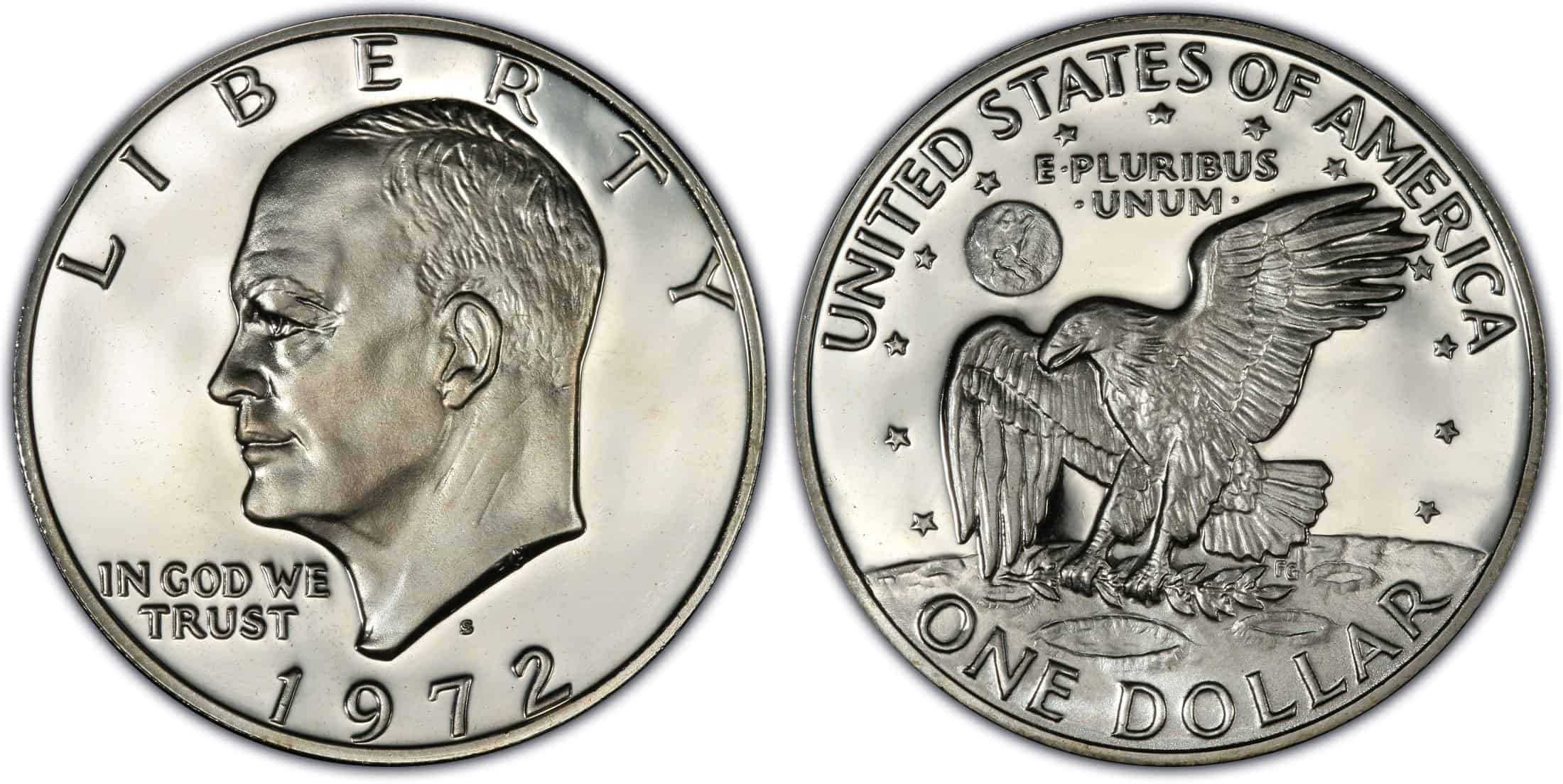
The Eisenhower dollar debuted in 1971 in tribute to the United States’ 34th President, Dwight D. Eisenhower. The minting of the coin came to an end in 1979, having a short just short of nine years. Some of the Eisenhower dollars are known to be valuable, with the 1972 Eisenhower dollar being one of them. So what exactly gives the 1972 Eisenhower dollar value?
1972 Eisenhower Dollar Value Chart |
|||||
| Coin Type | Circulated | MS 63 | MS 66 | MS 67 | MS/ PR69 |
| 1972 No Mint Mark Or D Eisenhower Dollar, Type 1 | $1.05 to $1.50 | $6.83 | $45 | $140+ | N/A |
| 1972 No Mint Mark or D Eisenhower Dollar, Type 2 | $30 | $75 to $150 | $1,150 to $10,400 | N/A | N/A |
| 1972 No Mint Mark or D Eisenhower Dollar, Type 3 | $1.05 | $4 | $120 to $2,500 | $5,800 | N/A |
| 1972 “S” Eisenhower Dollar, 40% Silver Press Proof | N/A | N/A | $13 to $77 | $13 to $120 |
$120 to $4000
|
1972 No Mint Mark Eisenhower Dollar Value
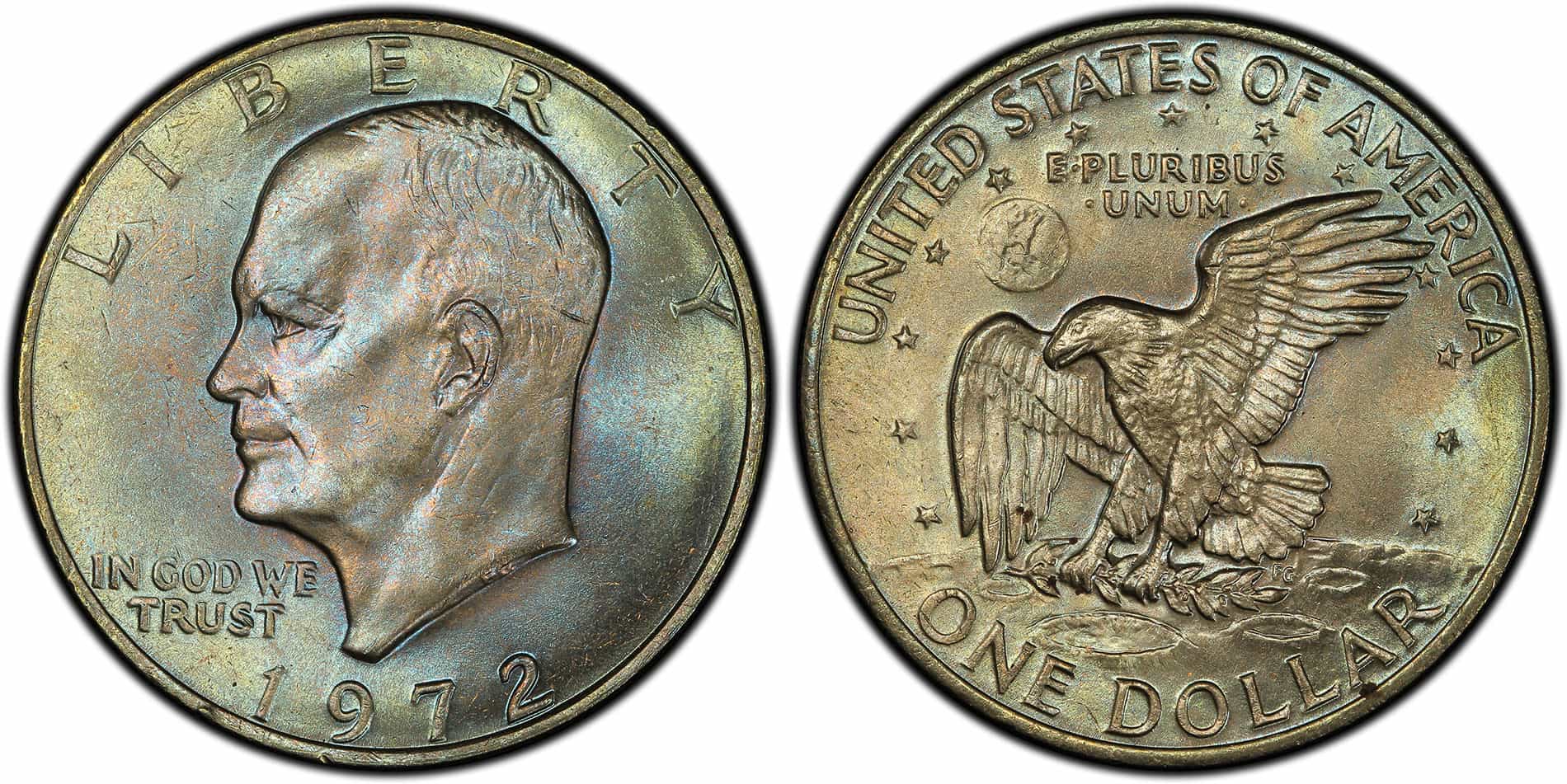
History
The United States wanted to honor former President and World War 2 general Dwight D. Eisenhower after his death on March 28, 1969. As had been done throughout U.S. history, the country paid homage by placing a figurehead on currency, particularly coins. So it was decided that they would issue a $1 coin in tribute to the late president.
As the decision for this new coin came at the tail end of the Coinage Act of 1965, all decision-makers, regardless of most agreeing to make the coin, were torn as to whether the coin would be made using any silver as was being done with the John F. Kennedy half-dollars.
Ultimately the decision was made that the U.S. Mint would produce Eisenhower dollar coins composed of a respectable amount of silver (80% silver and 20% copper for the outer layer, 79% copper and 21% silver for the center core) as a collectible commemorative coin. There would also be a second type of coin meant for business circulation that did not feature any silver at all but rather a copper and nickel composition (75% copper, 25% nickel).
The first proof coins that had been purchased in advance by collectors for $10 each were officially distributed on October 14, 1971, President Eisenhowers’ birthday. The rest of the new Eisenhower dollars became available to the general public via banks on November 1, 1971. Though there had seemed to be interest from the public at the release of the new coin, circulation of it quickly came to a standstill.
A surprising study done by the U.S. Treasury in 1976 found that most Eisenhower dollars were only used in a transaction at all but one time. It is believed this was due to the coin’s weight and bulkiness. In an unforeseen turn of events, the Eisenhower dollars were used heavily within Nevada casinos, where they were used as private gambling tokens.
In 1976, the Eisenhower dollar saw a new reverse in celebration of the U.S. Bicentennial. The new reverse changed significantly, and in place of the Bald Eagle landing on the moon was the Liberty Bell with an image of the moon (with respect to the moon landing in 1969) that can be seen behind the bell in the distance.
Often referred to as the “Ike” dollar (Ike being the nickname of President Eisenhower), its circulation did not get better in the following years. Production of the Eisenhower dollar was scaled down in the following years after release, and by 1974, it was decided that no commemorative Eisenhower dollars would be made again. Worried about the expense of striking the weighty coin and its lack of circulation, the U.S. treasury moved to create a dollar coin that was smaller in size. Production of the Eisenhower dollar came to an end in 1979.
Obverse
The obverse of the 1972 Eisenhower dollar depicted a profile portrait of President Dwight D. Eisenhower. The portrait was designed by long-time U.S. Mint Engraver Frank Gasparro, who had designed the Reverse of the John F. Kennedy half-dollar years earlier. Gasparro, who at the time of the minting of the first Eisenhower dollars filled the role as the U.S. Mint’s Chief Engraver, completed the obverse using a sketch that he had done of the president in 1945.
Above President Eisenhower’s head is the word “Liberty,” and to the left, under his chin, “In God We Trust”. The mint year, “1972”, is displayed at the bottom of the coin just below the base of the bust.
Reverse
Just as with the obverse of the 1972 Eisenhower dollar, U.S. Mint Chief Engraver Frank Gasparro was also responsible for the design of the coin’s reverse. Less than two years before the release of the Eisenhower dollar, the American spaceflight Apollo 11 successfully landed on the moon. The mission insignia for Apollo 11, which U.S. astronaut Michael Collins designed, was used as inspiration for Gaparro’s design of the reverse.
The reverse of the 1972 Eisenhower dollar depicts a Bald Eagle in the process of landing on the moon’s surface while holding an olive branch in its talons. Above the left wing and head of the eagle, you can see the planet earth. Directly above the eagle is the U.S. to E Pluribus Unum (Latin for “Of many, one.”) The motto, earth, and eagle are encompassed by a total of 13 stars. Just above the stars at the top of the coin are the words “United States of America.”
Attributes
There were three different dye patterns used on the globe located to the left of the eagle’s head on the reverse of the 1972 Eisenhower Dollar. These three different dye patterns that were used are known as Type 1, Type 2, and Type 3 1972 Eisenhower dollars.
Not all of the 1972 Eisenhower dollars are considered to be very valuable, but there are many types of “Ikes” from this year that are well sought out and can be worth thousands of dollars. Much of the value is also determined by the “Type” of the 1972 Eisenhower dollar at hand.
There were three different types of dye strike used for the earth depicted on the coin’s reverse.
Type 1, just like the other two types, shows the outline of the United States with a focus on the Florida coastline and the islands nearby. However, type 1 does not give a good definition of the islands.
Type 2 gives a great round impression of the planet earth but does not give an accurate depiction of the Florida shoreline and the islands. Type 3 shows a better-rounded earth than that depicted in Type 1 and gives a more accurate look at the Florida shoreline and the nearby islands. The U.S. mint eventually chose to stick to Type 3, making Types 1 and 2 rare and hence, more valuable.
Value
Unlike other 1972 Eisenhower dollars that were created specifically for collectors, the coins with no mint mark (therefore, we know they were created in Philadelphia), were made for business. 75,890,000 of these coins were struck on a nickel and copper composition over a copper center. These coins today are not worth much if they lack a decent grade. However, 1972 Eisenhower dollars that receive a good grade can be valued up to $90. If graded at MS 66, it can be valued for as much as $10,500.
1972 D Eisenhower Dollar Value
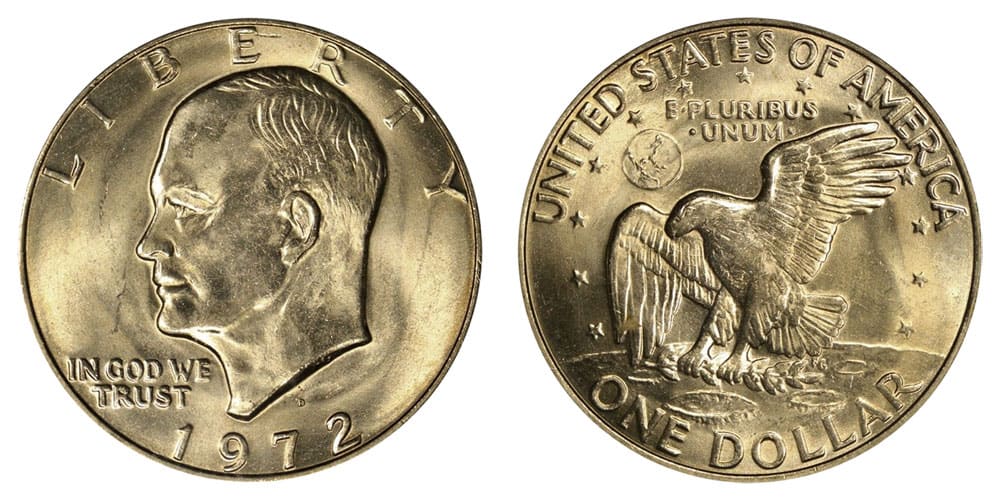
Much like the 1972 Eisenhower dollars minted in Philadelphia, the coins minted at the Denver mint were also intended to be for business use and are made up of the sale composition. The Denver Mint produced 92,548,511 of these coins. However, these coins are generally worth more than the 1972 no-mint mark dollar as they were released using the Type 3 dye of the earth on the reverse. The type 3 dye gave a better depiction of Florida and the islands just off its coast in the Caribbean.
A good grade of MS63 is worth all but $5 or so. But for 1972 D Eisenhower dollars graded at MS 66, they can be worth several hundred dollars. The true value depends on many things, including possible errors as well as the type of dye pattern used for the image of the earth on the reverse.
1972 D Eisenhower dollars with grades of MS 67 and above can often be seen at auction for anywhere from $800 to thousands of dollars. At this time, the highest-selling 1972 D Eisenhower Dollar sold at auction for $9,775.
1972 S Eisenhower Dollar Value
The San Francisco Mint was responsible for producing the 1972 Eisenhower Dollars intended for collectors. This location produced both uncirculated silver coins and silver proofs. 2,193,056 of the uncirculated proofs of the 1972-S Eisenhower dollar were struck, and 1,811,631 of the silver proofs. Both coins were comprised of 80% silver and 20% copper for the outer layers and 21% silver and 79% copper for the coin’s center core.
The average value of these coins in the mint state starts at $13 and can go as high as 3,00 for a grade of MS 69. The highest-selling 1972-S uncirculated Eisenhower dollar known to date sold in 2005 for $5,750.
1972 Eisenhower Dollar Grading
The value of a 1972 Eisenhower is dependent on the actual grade of the coin (and the possible occurrence of any errors, which we explore below). So how exactly is a 1972 Eisenhower dollar graded, and just what is the value of these different grades?
Rare 1972 Eisenhower Dollar Errors
Out of the 4 million 1972 Eisenhower dollars minted, some of them obtained errors through the striking process. Amongst these errors were double die errors and clipped planchet errors.
1972 Eisenhower Dollar Double Die Error
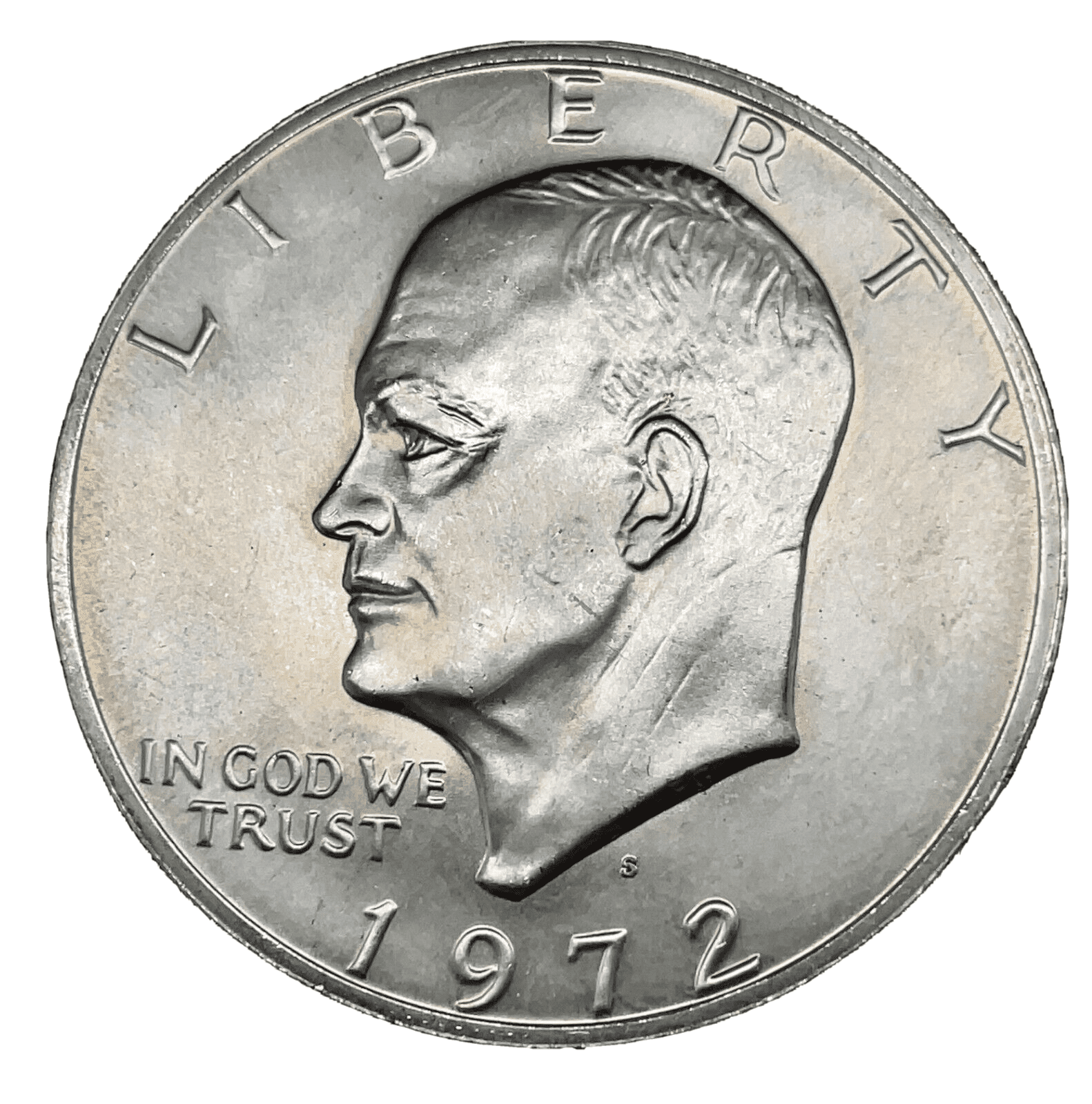
When a planchet moves slightly between the striking process followed by the dying process, the result is a slight double image on the coin. This is a common error in the minting process and occurred throughout the minting of the 1972 Eisenhower dollar. This simple error can raise the value of these coins from tens of dollars to hundreds.
1972 Eisenhower Dollar Clipped Planchet Errors
When a planchet does not properly move and is slightly overlapped with another, a clipped planchet will likely occur. A coin with a chipped planchet will have a portion of the coin cut off. The percentage of the coin that can be clipped is usually mine, but it can, at times, take off a sizable amount of the coin.
1972 Eisenhower Dollar FAQs
What makes a 1972 Eisenhower Dollar rare?
The 1972 Eisenhower Dollar coin is considered a rare coin because it contains silver (silver stopped being used in U.S. coins in 1970), and it was made to be a collector’s item and was available in a limited quantity.
How can I tell if my 1972 Eisenhower Dollar is silver?
If your 1972 Eisenhower dollar was struck at the San Francisco Mint and has an “S” mint mark, you can be sure that this coin does contain silver. It is made of 40% silver and 60% copper. Any other mint mark or no mint mark at all makes it certain that the 1972 Eisenhower dollar does not contain any silver. Some of these coins were composed of 90% silver and 10% copper.
Are all 1972 Eisenhower dollars 40% silver?
No, not all 1972 Eisenhower dollars contain 40% silver. The only 1972 Eisenhower silver dollars that contain silver are the coins struck at the San Francisco Mint. In this case, if it is a 1972-S silver dollar, it will partially be made out of silver. Additionally, the 1972 Proof Eisenhower dollar coins were made out of 90% silver.
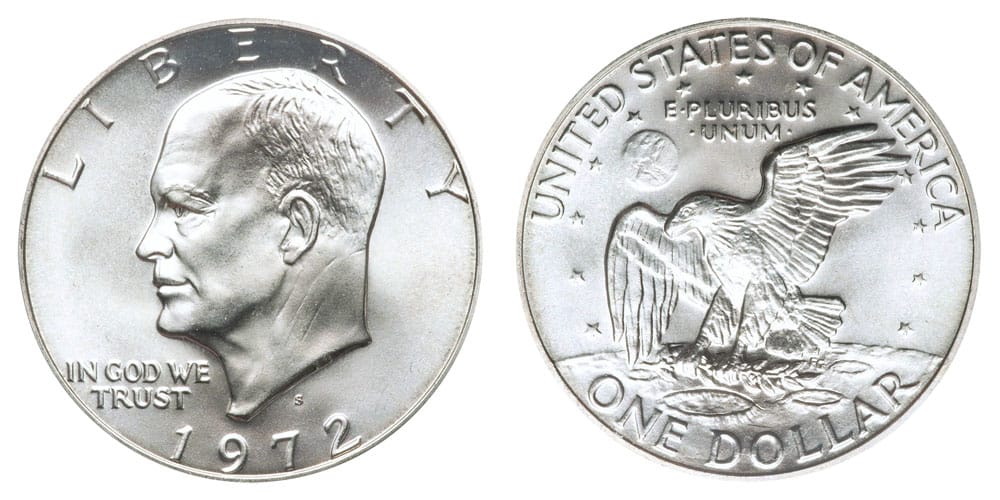
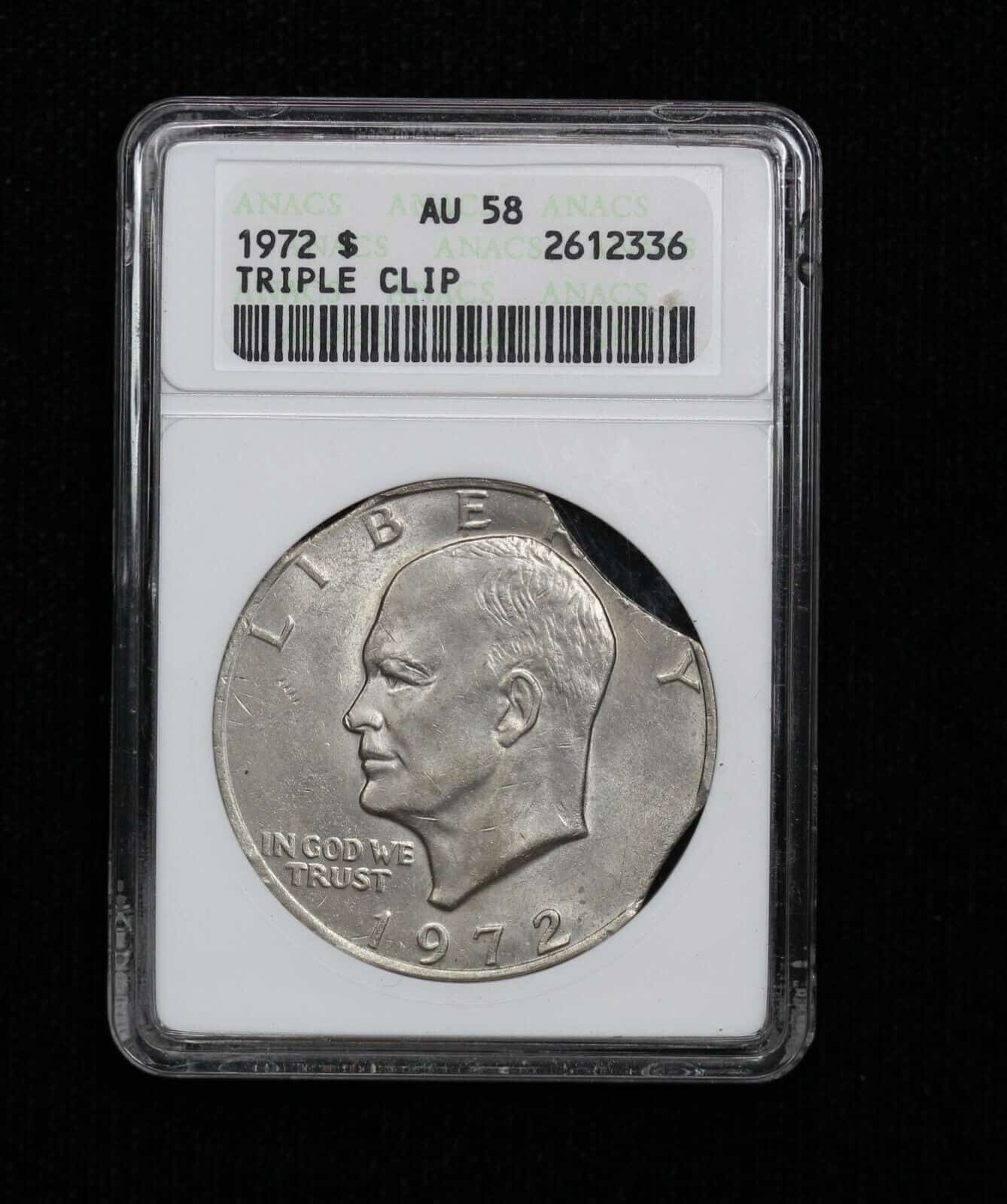
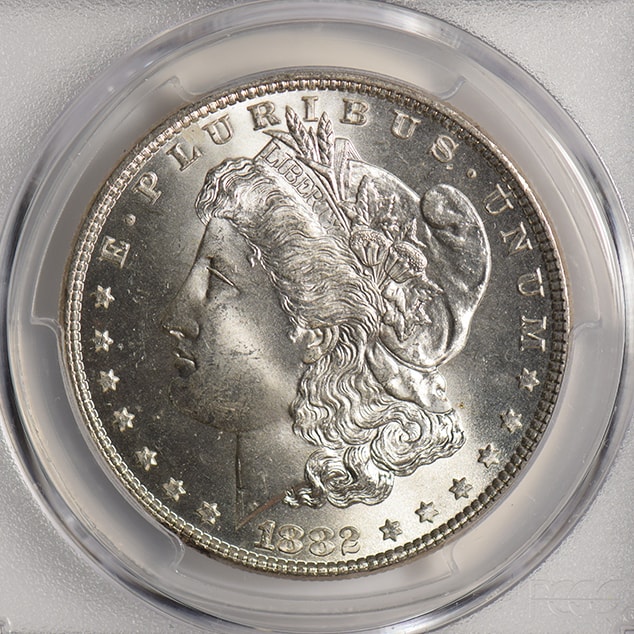
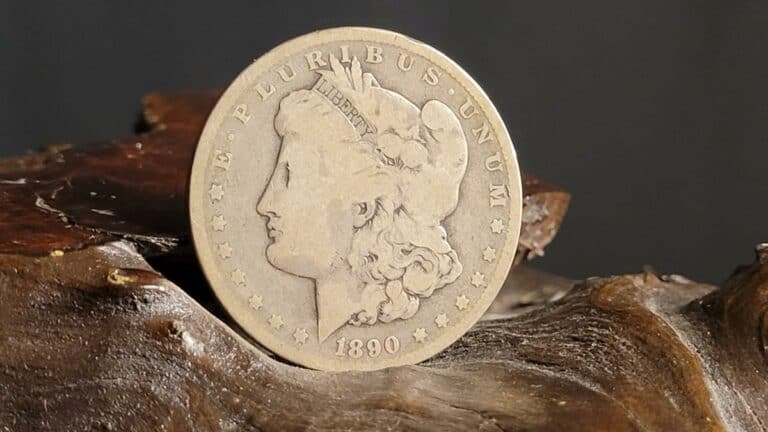
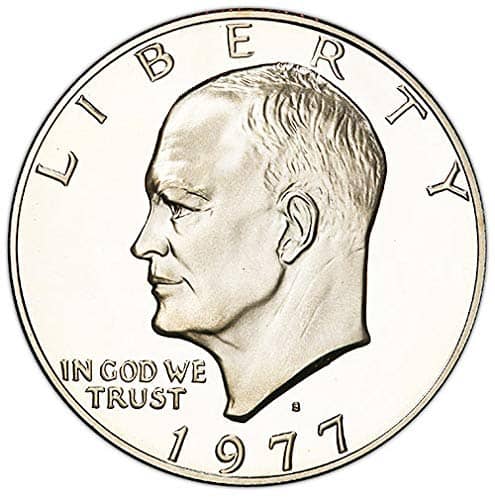
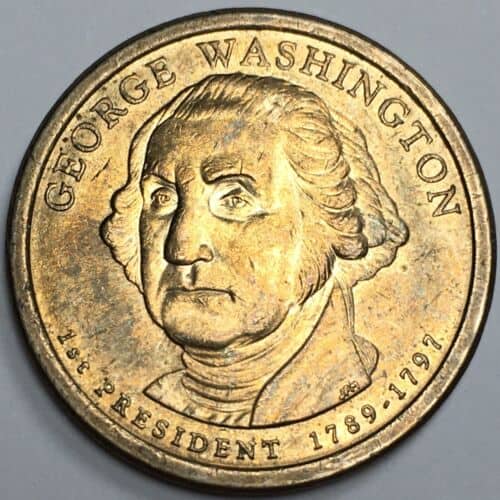
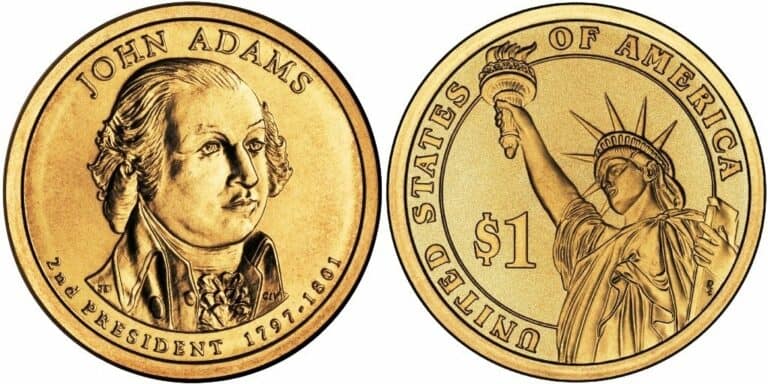
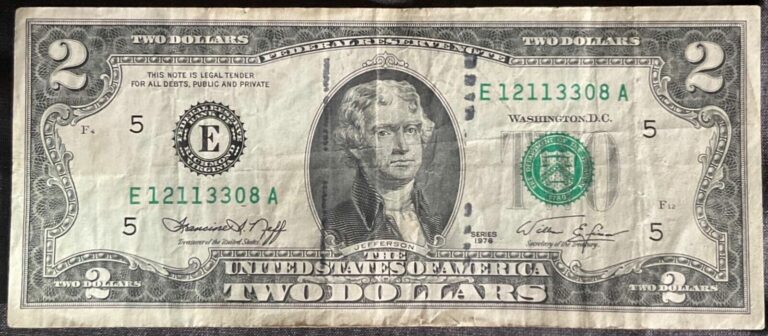
Buenos dias
Poseo monedas desde 1776_1976,Buen estado
Marca D
La A esta aplastada encima dos A,y la of de America es different a las demas
Que Debo hacer para valorarla